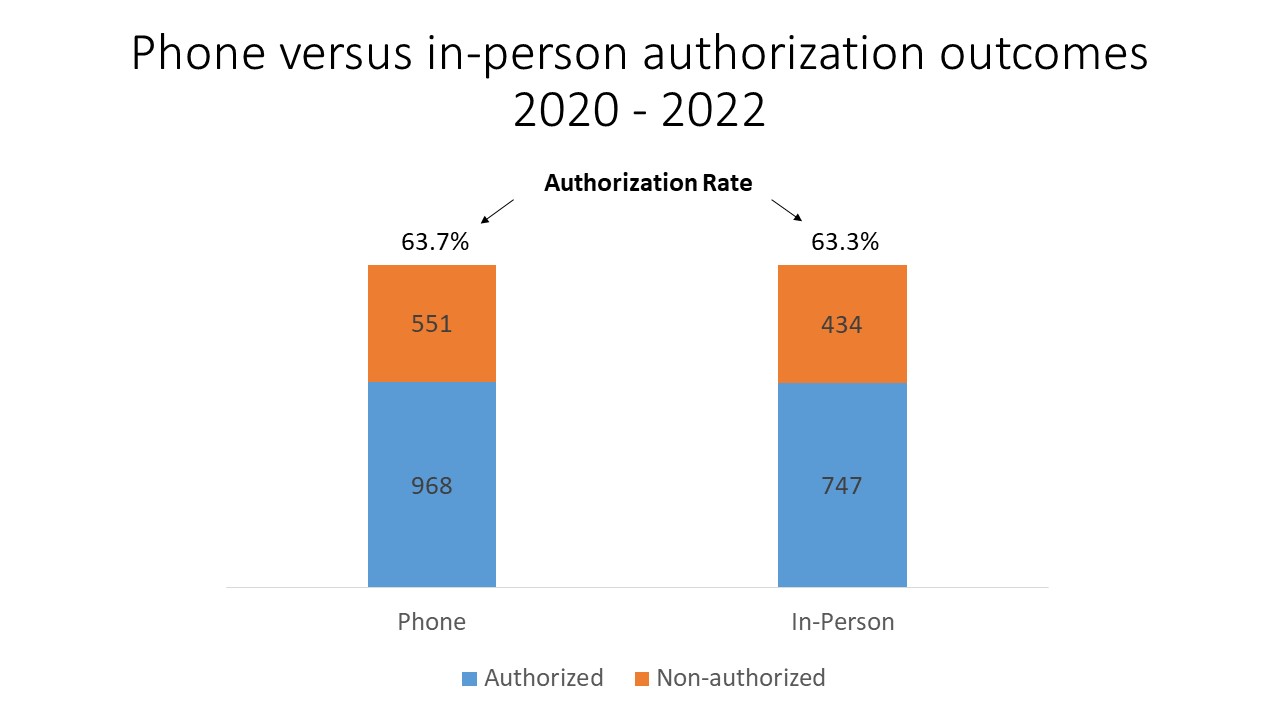Improving organ donation authorization rates: A telephone versus in-person donation discussion comparison
Alexandra Glazier1, Steven Averhart1, Jill Stinebring1.
1New England Donor Services, Waltham, MA, United States
Introduction: Improving authorization rates for organ donation remains a key strategy for Organ Procurement Organizations (OPOs) to increase the number of organs available for transplant. New England Donor Services (NEDS) had previously hypothesized conducting donation conversations with families telephonically versus in-person would negatively influence authorization rates if other factors remained the same (OPO-led donation discussion, donor registration status for example).
Method: In March 2020 due to pandemic conditions including hospital restrictions for onsite presence, shifting to telephone donation conversations became essential to NEDS’ ability to obtain organ donation authorization and maintain clinical operations to provide life-saving organs. This gave NEDS the opportunity to increase the frequency of donation discussions by telephone and provided an opportunity to compare donation conversations with the next of kin (NOK) of a potential donor conducted by telephone versus in-person.
Results: Despite preconceived ideas, donation discussions conducted by phone slightly out performed in-person donation conversations during the same timeframe. For the years 2020-2022, NEDS conducted 2700 donation conversations with the NOK of potential organ donors; of these, 1519 were telephonic conversations while 1181 were traditional in-person conversations. The authorization outcomes favored phone discussions by 0.4%.

Conclusion: To increase the availability of life-saving organs for transplant, OPOs must continually strategize on how to improve authorization rates. Challenging past assumptions about the best way to conduct donation discussions is paramount to improving authorization rates. NEDS’ outcomes for telephone versus in-person donation discussions establishes there is no difference in authorization rates. OPOs should leverage the efficiencies of telephone discussion to facilitate implementation of other strategies that positively impact authorization rates such as increasing the percentage of donation discussions led by trained OPO staff. For example, over the previous five years, Family Service Coordinators (FSCs) at NEDS have achieved authorization rates 21% higher than donation discussions led by hospital staff or other non-FSC OPO staff. In a larger geographic service area, being able to ensure FSCs conduct the donation discussion over the telephone if travel in-person will not be timely is an important strategy to increase overall authorization rates. By deploying a mix of telephonic and in-person donation discussions, NEDS currently achieves a rate of 98% of all donation discussions conducted by FSCs. In 2022, this resulted in NEDS FSCs conducting 1082 donation discussions for a service area that includes 6 states, 200 hospitals and a population over 14 million.